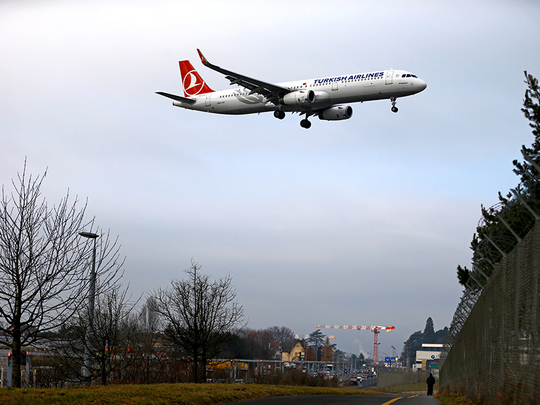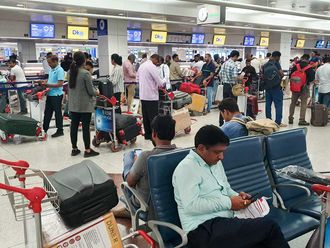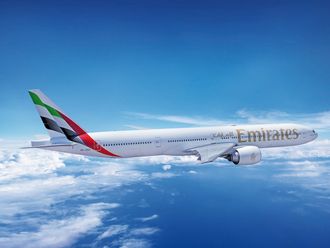
GENEVA: While 2018 will see the Middle East airlines doubling their net profits to $600 million (up from the $300 million this year), big challenges still remain for the region’s carriers, warns IATA’s chief economist Brian Pearce.
Releasing its financial outlook on Tuesday in Geneva, the International Air Transport Association (IATA) said the Middle East carriers’ will see demand in 2018 grow by 7 per cent, outpacing announced capacity expansion of 4.9 per cent (the slowest since 2002).
“The region’s carriers face challenges to their business models, from low oil revenues, regional conflict, crowded air space and the impact of travel restrictions to the US,” Pearce told Gulf News.
“But despite the challenges, there is positive momentum heading into 2018,” he was quick to add. “Like Africa, the rise in fuel prices is starting to help with revenues and the local economies [in the region], which are expected to be stronger.”
Meanwhile, IATA’s Director General and chief executive, Alexandre De Juniac, does not see the declining oil revenue as a big challenge …“because Emirates is in Dubai, and Dubai is not dependent on oil,” he said.
The region’s airlines have one of the lower break even load factors, as per IATA estimates. Post-tax profits are expected to recover a little to $600 million next year, representing a profit of $2.65 per passenger and a net margin of 0.9 per cent.
Super connector
While Gulf airports are often considered as a “super connectors”, airlines have been responding to the difficulties. “We have seen really sharp slowdown in capacity and growth. So, the load factors are picking up and that’s what is really bringing about the improvement,” Pearce said.
“But that’s not minimising the difficulties and challenges there still are,” he added.
That “super connector” position that Gulf airlines have been enjoying for long is slowly getting threatened by the new “super connector” Turkish Airlines, according to IATA.
The competition from Turkish Airlines is one of the major challenges the region is facing at the moment, Pearce said. “Turkish Airlines is a threat that the Middle East airlines should be worried about. Turkish Airlines has been performing a ‘super connector’ role with a different business model, using single-aisle aircraft. But it benefits from a lot of the geographical advantages, and it has grown dramatically in the last decade. So it’s certainly a competitor for the Sixth Freedom connecting traffic markets,” he explained.
Of course, Turkey faces its own difficulties as well, with the economy and political issues and terrorism, and that has hampered the market.
“So the weakness of home markets is one of the key challenges, and hopefully that’s easing with the rise in fuel prices,” Pearce said, adding that political instability and regional conflicts continue to affect inbound tourism. “It would be nice to see that diminish.”
“The fall in fuel costs is adding tremendously to the airlines’ profits,” Pearce said.
New aircraft challenge to hub
The region’s airlines are also seeing some challenge to the hub model from the new aircraft that are capable of bypassing hubs. “That’s putting pressure on some of the connections that the Gulf airlines have been serving,” Pearce said. “But I wouldn’t over-emphasise that. I think there is still a role for hub connecting operations but it’s just that some of the markets that they were serving, are now being served by the direct connections,” he added.
Growth normalising
IATA’s chief says while 2017 was a bad year for the region’s airlines as it was for the global industry, the Middle East airlines have now “entered into normal waters … after a fantastic double-digit growth of 20 years.”
“They are now entering into a growth area which is more comparable to their peers. So they are facing the same type of issues such as restructuring the network, reshuffling destinations and so on. Now, it’s normal business for them,” he told Gulf News.
This year’s profit forecast for the region’s airlines has been revised downwards from aviation trade body’s June forecast of $400 million, which was a 63.6 per cent drop from the $1.1 billion the airlines made in 2016.
De Juniac said he does not expect a drop in revenue and traffic in the Middle East, “but probably a slowdown compared to the growth they have seen in the past 20 years.”











